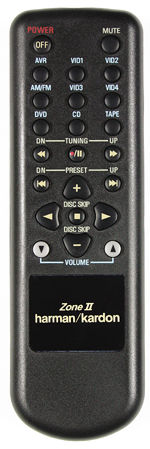Harman/Kardon DPR 1005 A/V Receiver and Paradigm Monitor v.4 Series Speaker System Page 2
The PW-2200 sub is a big mutha, so it naturally delivers the prodigious, low bass that only a grown-up, 12-inch, 400-watt (or larger) beast can. No matter what comes its way, it's always cruising.
It's worth noting that Paradigm has resisted the temptation to move their operations off shore. Everything that goes into a Monitor Series speaker—the cabinets, complete drivers, and even the subwoofer's internal electronics—was all designed, engineered, and manufactured by Paradigm in Canada. Keeping all of that under one roof is the only way to ensure the Monitor Series' quality standards. In their rigorous, double-blind listening sessions, Paradigm compares old models with the new ones, and entry-level models compete against pricier ones. Genuine sound quality and value improvements are all part of the design process.
Highlights
• Paradigm's cost-to-performance ratio is off the chart
• Designed, engineered, and built entirely in Canada
System Synergy
After I configured the Monitor 11 towers as "small," with the crossover adjusted to 40 Hz on the DPR 1005's speaker set-up menu, the dialing-in process was straightforward. I had started out running the Monitor 11s as large speakers, and they sounded great, but the small setting tightened up the bass, especially when I played the system really loud.
 The 45-inch-tall Monitor 11s sonically disappear like a set of mini satellites—or much more-expensive big speakers. Thanks to the Monitors' unusually high efficiency (all boast in-room ratings of over 93 decibels at 1 watt), the system played seriously loud, and I never detected amplifier or speaker strain. So, if you're nervous about the DRP 1005's 70-watt-per-channel spec, don't be. Harman's engineers tell me that the 70-watt rating is for real and that it will measure near that number with all channels driven. (See the HT Labs box.) The fact is, a lot of 100-watt-per-channel receivers can't deliver 70 watts per channel when all channels are driven. Beyond that, the synergy between the Harman and the Paradigms was perfect; they sound like they were made for each other. If you really need more power, check out the DPR 1005's big brother, the 120-watt-per-channel DPR 2005 ($1,799).
The 45-inch-tall Monitor 11s sonically disappear like a set of mini satellites—or much more-expensive big speakers. Thanks to the Monitors' unusually high efficiency (all boast in-room ratings of over 93 decibels at 1 watt), the system played seriously loud, and I never detected amplifier or speaker strain. So, if you're nervous about the DRP 1005's 70-watt-per-channel spec, don't be. Harman's engineers tell me that the 70-watt rating is for real and that it will measure near that number with all channels driven. (See the HT Labs box.) The fact is, a lot of 100-watt-per-channel receivers can't deliver 70 watts per channel when all channels are driven. Beyond that, the synergy between the Harman and the Paradigms was perfect; they sound like they were made for each other. If you really need more power, check out the DPR 1005's big brother, the 120-watt-per-channel DPR 2005 ($1,799).
Sounds
The i, Robot DVD wasted no time pushing all of the right buttons of my persnickety reviewer brain. Will Smith battles a horde of athletic robot baddies while he drives his wowie-zowie 2035 Audi sports car. I gotta tell you, the sense of blinding speed clashing with twisting metal added immensely to this joy ride of a scene. The PW-2200 sub effortlessly dished out deep bass thrills, while the rest of the system covered every inch of my large home theater with sound.
I always knew Frank Zappa was a musical genius, perhaps the greatest rock composer of all time. When I checked out his surround mixes dating back to the 1970s on the recently released QuAUDIOPHILIAc DVD-Audio disc, I discovered another dimension of his music. His surround experiments sound better and make more musical sense than the vast majority of today's 5.1 recordings. If you get a chance to hear the Harman/Paradigm system with this disc, you'll swear you're in the room with Frank and the guys. It's spookily real-sounding.
Peter Gabriel's Play DVD video collection may be the first to feature a high-resolution DTS 96/24 multichannel mix, and it's certainly more transparent and offers greater soundstage depth than everyday Dolby Digital tracks. The surround mixes vary from tune to tune, and the Harman/Paradigm system delineates its spatial delicacies with exacting precision.
Before I forget to mention it, I have to put in a good word about the DPR 1005's Dolby Headphone processor. It dramatically opened up the sound of my Grado SR 125 and Sennheiser 580 headphones to provide a true surround experience. Harman's implementation of the processor decodes Dolby Digital and DTS 5.1 soundtracks.
Adding It All Up
When you stop and consider that the suggested retail price of the Harman/Paradigm system comfortably fits in the "affordable high-end" strata, $4,605 to be exact, it starts to look like an incredible value. Better still, it will appeal to music lovers and home theater mavens alike. If your room is smaller than my 800-square-foot theater, consider substituting Paradigm's PW-2100 10-inch sub and the Monitor 9 towers, and the price will plunge south of $4,000. Thanks to the DPR 1005's extra-nimble bass-management system, I can confidently recommend opting for the bookshelf Monitors in more-intimate spaces. Just add a TV, and you'll have yourself a first-class theater.





























































